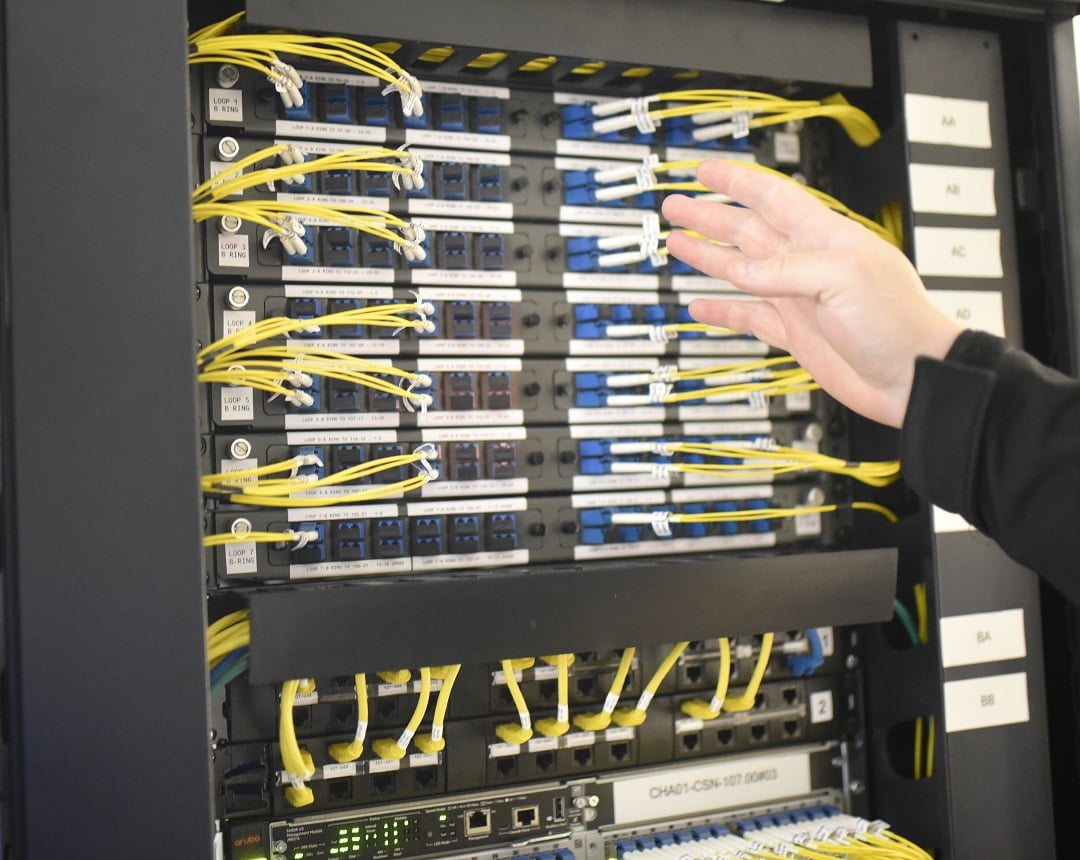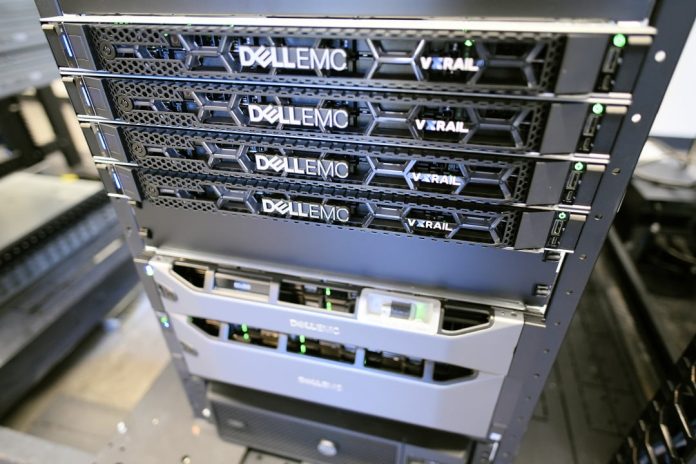What’s the future of security integration in a rapidly changing electronic security space? And how can integrators shape their businesses to ensure they retain expertise and growth?
The security integration business has reached the point where monitoring rebates are concluded, technology is increasingly networked, and solutions have lateral scope. As the industry changes, what will security installation and integration look like – what will its core strengths need to be? What will its marketplace be? What will its business model be?
According to Danny Berkovic of Securitas, while security integration is undergoing change much remains the same – especially at an operational level.
“Monitoring rebates were a financial incentive, but their termination does not remove the need for remote services,” Berkovic says. “Companies such as Securitas are transforming their monitoring business to include remote services such as remote video verification, remote access control, remote guarding, remote site administration/maintenance. In my opinion the change is already here.
“The future will require a broader view on protective services than just electronics installation and integration. To fully protect a site, clients will want a combination of electronic installation, service, maintenance, integration and remote services via IP. Some will go as far as integrating this technology with guarding services and credential management to provide a full end-to-end capability.
“The security integration business model is more likely to include a monthly fee for service that allows a client to scale their requirements during periods of increased or decreased levels threat.”

According to Berkovic, lateral expansion will be part of this future – this means a security business model that offers retail analytics, process control automation, automation for efficiency, as well as data and cloud management.
“Security integrators now require an ability to action the results of any recommendations from the intelligent systems,” he explains. “Electronic security will increasingly be viewed as a piece of a puzzle – not as a standalone solution. The better integrated the pieces, the more efficient the solution becomes. This will extend beyond protective services and into business and facilities operations.”
When it comes to the biggest drivers of change, Berkovic says this varies from sector to sector.
“In the retail sector, cost is a huge factor and short-term ROI is a massive incentive,” he says. “In data centres it is integrated cyber and physical security. Commercial buildings are increasingly focussed on operational efficiency and end user experience. It is important to understand the nuances of each market segment.”
A challenge for security integrators is competition on price – how hard is this making life for installation and integration businesses and do you think it leads to best results for end users in terms of getting the best performing solutions?
“The integration market has always been very price competitive and this hasn’t changed,” Berkovic says. “However, sophisticated buyers are learning from experience that lower cost in the short term is often not associated with whole-of-life savings. Project using good integrators and quality technologies have stood the test of time better than solutions engineered for lowest cost.”

What skillsets will the technician of the future need to develop in order to stay at the forefront of the electronic security business, according to Berkovic?
“Networking and IP, software, client focus, time and quality management and integration of safety into all aspects of work,” he says.
An issue at present is security licensing, which often seems not to apply to IT integration business and Berkovic agrees this issue needs addressing.
“Security licencing is lagging the realities of the market,” he explains. “There is a significant cyber risk in both industrial and operational IT networks and there is no requirement for licencing in IT – which makes little sense. National licencing is also a great way to introduce significant efficiencies into the Australian industry.”
Acquisitions – the industry has seen some well-known security integrators acquired in the last 18 months – do you think this trend is just beginning? Does it bring opportunity for smaller businesses?
“Fredon Security has recently been acquired by Securitas, so I have a view on this,” says Berkovic. “The ability to bring world class integrated solutions – with a complete focus on protective services – is exciting and matches what our clients are asking for. I think smaller businesses will continue to thrive but will likely need to be increasingly specialised in markets or technologies.”

What’s the biggest threat facing security installation and integration businesses right now?
“The biggest challenge will be recognising that installations and integrations are only a part of an overall security solution – and developing electronic solutions that not only integrate with other technologies – but also other security services – will be key,” Berkovic explains.
“Any electronics integrators who cannot demonstrate a good understanding of cyber threats and how to address them then it will struggle to retain their clients as that threat profile continues to increase.”
“Conversely, the biggest business opportunities of the future for security installers and integrators revolve around taking advantage of solutions offered by IP – take video monitoring, facial recognition, secure cloud services – and use these to increase safety rather than viewing them in isolation.”
What would a possible integrated security solution of the future look like in terms of infrastructure and levels of integration, functionality, and the nature of its management system?
“A hybrid private cloud will be the interface to an IP-centric security solution,” Berkovic says. “Redundancy will be designed into the solution using both onsite and offsite technologies. It will include sensors that are not currently considered part of a security solution and these will help predict events before they happen. The data will also be used by other disciplines such as marketing and facilities.
“Separation between access control, video, alarms and intercoms will reduce and instead these will be viewed as sensors used to feed data to analytic engines who will make recommendations on actions required. Analytics will reduce the need for an onsite security operations centre – instead events will be verified and then notified directly to appropriate staff. Physical access control systems will merge with IT and provide a more holistic view of where people are and what they should be doing.”

Wade Anderson of Bravis Security agrees the security integration business has changed.
“Over the last 15-20 years the enterprise space has been much the same with hardware/controllers in a location with security cabling going to each device and door,” he explains. “There is a significant change in that model. In access control for instance, controllers are either a network device connecting into an IT subsystem or going the way of wireless locks and controllers.
“The change from traditional electronic to IT is vast, and if integrators don’t stay up to speed with those changes, they will find it very difficult to remain competitive. The integrated security solution of the future is going to be cloud-based with minimal hardware and servers with the entire security solution integrated in one seamless platform.
“Consumers needs are changing as rapidly as technology – they have realised the data being gathered via cameras/sensors is extremely valuable for business management when used correctly. The analytics and AI space is changing retrospective grudge security purchasing into an enormously valuable data-gathering tool. The cloud is making this function much more accessible, cost effective and easy to use and decipher.”
While technology is changing, would you say the operational needs of customers are changing and if so, what are the biggest drivers of change?
“Consumers are so much more aware of what is available, and their needs are changing from the traditional security purchaser to needing tools/solutions that are giving them operational benefits,” Anderson says. “For example, 15 years ago a store owner may have had a CCTV camera for security purposes only. Nowadays that same store owner is able to use a camera for security, but more importantly the ability to derive analytics and statistics of who their shoppers are; male/female, young/old, how long they’ve been in the store and heat map where shoppers are spending their time within the store.
“This information makes a new AI capable camera far more valuable than a traditional security camera. Quite frankly, it’s a very exciting time to be in this industry. If you are able to stay ahead of this curve, there are tremendous opportunities available. The skillsets needed to stay at the forefront of the electronic security business are all about networking, VLANS and everything IT. Failure to adapt may curtail many integrators’ ability to win jobs.”

According to Anderson price competition is making the market tough but he says with quality DIY solutions coming through things may get tougher still.
“It is a very challenging time for a lot of integrators, especially in that residential/small business sector – margins are shrinking and with so many competitors it is a real tough fight,” he explains. “I think the biggest challenge may come from good quality and low-cost DIY/wireless systems starting to enter the market. The DIY market has always been around but there has always been a huge gap in quality between what integrators sold and what you could pick up at Bunnings.
“That is changing in a big way. A lot of the DIY products hitting the market now are real alternatives for the residential and small business market. And the biggest benefit for the consumer is not having to fork out on labour costs. In a traditional security install an integrators labour cost is anywhere between 35-50 per cent of the total price and that is the part that consumers are battling to swallow.
Anderson also sees more acquisitions over the next few years.
“There will be a lot more acquisitions of smaller businesses and bureaus over the next 18 months,” he says. “With monitoring rebates no longer in effect, and margins shrinking, the small owner-managed businesses will battle to keep up.”
#securityelectronicsandnetworks.com












